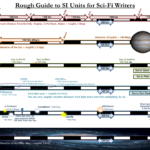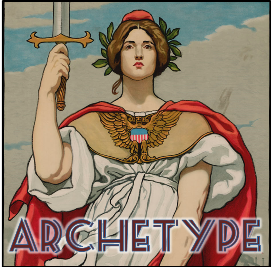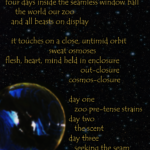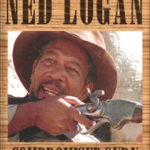
 Humans tend to get befuddled by inhuman scales. This is nowhere so obvious as in bad science fiction and bad science reporting. And, just bad science.
Humans tend to get befuddled by inhuman scales. This is nowhere so obvious as in bad science fiction and bad science reporting. And, just bad science.
An inability to grasp the vast scales of outer space caused lots of people to mistakenly believe the Voyager spacecraft was ‘leaving the solar system’ (which likely extends out to 10 petameters) when it was, in fact, merely crossing the heliopause (about 15 to 30 terameters). In case you’re wondering, a petameter is equal to one thousand terameters; it’s quite an error in scale to mark the boundary of our star system at under 30 of a given unit when that star exerts its influence out to 10,000 of those units.
As you can guess, I’m a big fan of SI units and their remarkably efficient prefix system. I think it’s about time we started using SI, to the exclusion of alternatives whenever reasonable. (Fantasy and historical fiction writers, you’re off the hook!) Long ago, one might have made the argument that people can’t grasp the thousand-fold relationship between SI prefixes, but the enthusiasm with which consumers rode the electronic ramp-up from kilobytes to megabytes to gigabytes to terabytes proves otherwise.
People get it. SI is workable. So, how about we stop talking about how many miles it is to various celestial destinations, especially since confusion about English and SI units actually caused the complete loss of a $200M Mars mission? In fact, let’s just ditch the insane menagerie of units bandied about in astronomy, the parsecs and light-years and AUs. We have SI units to cover these scales. In fact, we have SI units to cover all scales. That’s kinda the idea!
And, anyone who talks about how many “million kilometers” it is to Jupiter or Saturn should be euthanized. “Meter” is the base unit and “kilo” means “thousand.” Are you telling us that Jupiter is eight hundred million thousand meters from the Sun? Forgive me, but that’s unforgivably dumb. If you mean “gigameter” then say it. If you think people need reminded how big “giga” is, try a parenthetical statement or, hell … let them Google it.
Also, I understand the utility of scientific notation in calculation, but in description it is obnoxious, particularly when the description is intended for general audiences. Use the prefixes.
So… having voiced my complaint, let me get to the Rough Guide promised by the title of this rant:
Continue reading →

 This is the seventh installment of my Writing Archetypes series, where I talk about certain roles, scenes, and plot points that can be found repeated in many stories. They synchronize stories with the narrative instincts of the human mind, and imbue them with a distinct psychological presence.
This is the seventh installment of my Writing Archetypes series, where I talk about certain roles, scenes, and plot points that can be found repeated in many stories. They synchronize stories with the narrative instincts of the human mind, and imbue them with a distinct psychological presence.






 Juliette Wade’s TalkToYoUniverse blog, which focuses on worldbuilding, has long been one of my favorite writing resources. And,
Juliette Wade’s TalkToYoUniverse blog, which focuses on worldbuilding, has long been one of my favorite writing resources. And, 
 Sometimes, it is hard to believe that we actually have little robots rolling around the surface of another world, digging into the dirt and taking photos, a world that is still in the running for having life.
Sometimes, it is hard to believe that we actually have little robots rolling around the surface of another world, digging into the dirt and taking photos, a world that is still in the running for having life.
 Writer’s Digest and Digital Book World conducted a survey of over 9000 authors on their preferences for traditional or self-publishing. The full results will be presented at the upcoming Digital Book World Conference, but DBW has
Writer’s Digest and Digital Book World conducted a survey of over 9000 authors on their preferences for traditional or self-publishing. The full results will be presented at the upcoming Digital Book World Conference, but DBW has 


